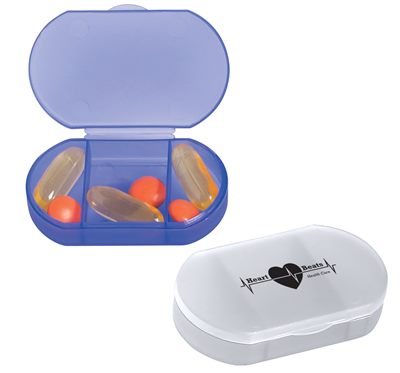

Objectives: To determine the effect of C. In humans, administration of crotaline Fab antivenom (CroFab®) has been shown to result in transient improvement of platelet levels however, it is not known whether platelet aggregation also improves after antivenom administration. Laboratory studies have demonstrated that venom from several species, including the Mojave rattlesnake ( Crotalus scutulatus scutulatus), can inhibit platelet aggregation.

Tanen 1ġ Naval Medical Center, San Diego CA USA 2 Brown University, Providence RI USAīackground: Patients sustaining rattlesnake envenomation often develop thrombocytopenia, the etiology of which is not clear. CROTALINE FAB ANTIVENOM REVERSES PLATELET DYSFUNCTION INDUCED BY C. It may be appropriate to begin HDI therapy for Poison-Induced Cardiogenic Shock at 10 U/kg/hr.Ģ. 10 U/kg/hr was statistically and clinically significantly superior to 5 U/kg/hr, which was statistically and clinically significantly superior to 1 U/kg/hr. No differences in glucose utilization were found between the three insulin arms.Ĭonclusion: HDI was statistically and clinically significantly superior to placebo in this propranolol model. There was also a statistically significant difference in dose by time interaction on MAP, HR, SVR and base excess, but not lactate or K. Thus the 10 arm was superior to the 5 arm by 0.63 L/min of CO, and the 5 arm was superior to the 1 arm by 0.5 L/min of CO at 6 hours. A linear mixed-effects regression found a statistically significant dose by time interaction, in which CO improves an average of 0.00035 L/min for every 1 u/mg/kg of insulin per 10 minute observation (p = 0.00035). Given the average nadir CO of 2.0 L/min, this represents a 57% increase in CO. There was a statistically significant increase in CO of 1.13 L/min in the 10 arm compared to the 1 arm over the 6 hour study period (p = 0.009). Results: Survival: 2 pigs died in the C arm, 1 pig died in each of the 1 and 5 arms, and no pigs died in the 10 arm. Serum potassium (K) and lactate were recorded hourly. CO, HR, MAP, arterial blood gas, systemic vascular resistance (SVR) and serum glucose were recorded every 10 minutes.

After the NS bolus the blinded infusion of C, 1, 5 or 10 was started and pigs were resuscitated for 6 hours or until death. The P infusion was reduced to 0.125 mg/kg/min and continued throughout the protocol. At this point a 20 mL/kg bolus of saline (NS) was administered. All pigs received a P bolus of 0.5 mg/kg followed by an infusion of 0.25 mg/kg/min until the point of toxicity was reached, defined as a 25% reduction in baseline heart rate (HR) x mean arterial pressure (MAP). Pigs were anesthetized and underwent placement of a tracheostomy, Swan-Ganz catheter and arterial line. The arms were as follows: saline control (C), or HDI at 1 U/kg/hr (1), 5 U/kg/hr (5), and 10 U/kg/hr (10).
ENROUTE 4 COMPARTMENT PILL BOX TRIAL
Methods: This was a blinded, randomized and controlled trial with 4 arms consisting of 4 pigs in each arm. We hypothesized a dose of 10 U/kg/hr of HDI would be superior to 1 U/kg/hr in the treatment of pigs with PICS from propranolol (P) with cardiac output (CO) as our primary outcome measure. The optimal dose of HDI in PICS has not been previously studied or established. Recommendations for dosing of HDI vary, from 0.5 U/kg/hr up to 10 U/kg/hr. Holgerīackground: High dose insulin (HDI) has proven superior to glucagon and catecholamines in the treatment of Poison-Induced Cardiogenic Shock (PICS) in previous studies.

10 U/KG/HR OF HIGH DOSE INSULIN IS SUPERIOR TO 1 U/KG/HR IN A BLINDED, RANDOMIZED, CONTROLLED TRIAL IN POISON-INDUCED CARDIOGENIC SHOCK Below we've included some easy and affordable organizers that will keep your suitcase tidy - and those luggage fees at bay.1.
ENROUTE 4 COMPARTMENT PILL BOX FULL
If you make full use of varying pouches and containers, you can not only put a physical limit on how much you take with you, but also make it easier to locate everything when you're unpacking at the hotel. The other half is organizing your suitcase to a T. Only including the vitals, regardless of the various "what ifs" that plague you mid-pack, is half the battle. Before you know it, you're slapped with a overweight baggage fee at the airport. Initially, packing lightly for an upcoming vacation or long weekend seems simple: Simply throw in a few shirts, shorts, and other essentials, and you're good to go.Īfter a while, though, it's easy to find yourself packing way more than what's necessary - an extra white button-down in case you accidentally get ketchup on yours, full-sized bottles of shampoo and body wash, maybe even a suit on the off chance you're spontaneously invited to a fancy dinner.


 0 kommentar(er)
0 kommentar(er)
